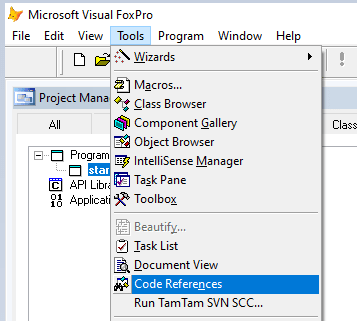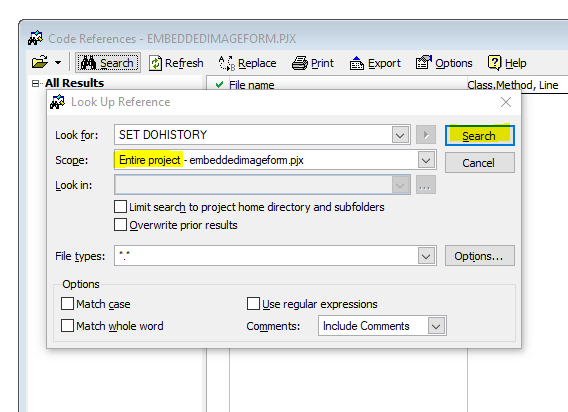Good afternoon, there is a problem. The application is located on a network drive,
users launch the application and select which file to upload to the Grid using the OptionGroup.
After selecting a file, copying took place (if the source was not available successCopied = .F.
(for this try catch) , "old file" was taken as the source
placeTo that was previously created).
And everything is fine, until two (at least) users try to simultaneously select
the same file (this means that there are two requests for the same path). The second user gets an error:
Code err 2059. "unhandled structural exceptions" ErrorNo 1705. Message: file access denied. LineNo:70 SSET DOHISTORY TO
I understand that it is necessary to make an alert and copy after a few seconds instead of an error. I tried with try catch,
but having learned that it is impossible to use return, I realized that it would not work.
users launch the application and select which file to upload to the Grid using the OptionGroup.
After selecting a file, copying took place (if the source was not available successCopied = .F.
(for this try catch) , "old file" was taken as the source
placeTo that was previously created).
Code:
TRY
COPY FILE (placeFrom) TO (placeTo)
successCopied = .T.
CATCH
successCopied = .F.
ENDTRYAnd everything is fine, until two (at least) users try to simultaneously select
the same file (this means that there are two requests for the same path). The second user gets an error:
Code err 2059. "unhandled structural exceptions" ErrorNo 1705. Message: file access denied. LineNo:70 SSET DOHISTORY TO
I understand that it is necessary to make an alert and copy after a few seconds instead of an error. I tried with try catch,
but having learned that it is impossible to use return, I realized that it would not work.


